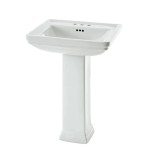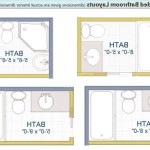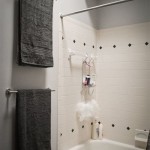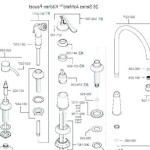How to Remove a Bathroom Sink Drain
Removing a bathroom sink drain is a common plumbing task that homeowners may encounter when replacing a sink, unclogging a stubborn blockage, or addressing a leak. The process, while generally straightforward, requires patience, the right tools, and a methodical approach to avoid damaging the sink or plumbing fixtures. Prior to commencing any work, it is imperative to turn off the water supply to the sink; this typically involves locating the shut-off valves positioned beneath the sink and turning them clockwise until fully closed. Ensure the water is completely shut off by briefly turning on the faucet. Should the sink boast an overflow drain, plugging it with a cloth will minimize the likelihood of debris falling into the drainpipe during removal.
This article provides a comprehensive guide on how to safely and effectively remove a bathroom sink drain, covering the necessary tools, step-by-step instructions, and essential safety considerations. Proper execution of this task not only allows for efficient repairs or replacements but also prevents potential water damage and plumbing complications.
Essential Tools and Materials
Successfully removing a sink drain hinges on having the right tools readily available. The following list outlines the essential items required for this task:
- Basin Wrench (Sink Wrench): This specialized wrench is designed to reach and grip the difficult-to-access nuts that secure the drain assembly to the sink. Its long handle and swiveling jaw make it ideal for maneuvering in tight spaces under the sink.
- Adjustable Pliers (Channel-Lock Pliers): These pliers are versatile and useful for gripping and loosening various components of the drain assembly, particularly larger nuts or plastic couplings.
- Pipe Wrench: While not always necessary, a pipe wrench can provide additional leverage when dealing with particularly stubborn or corroded drainpipes. Choose the appropriate size for the drainpipe typically 12-14 inch pipe wrench will work.
- Flathead Screwdriver: A flathead screwdriver is used to disengage the pop-up drain stopper mechanism and to pry loose any stuck components.
- Penetrating Oil (Lubricant): Applying penetrating oil helps to loosen corroded or stuck nuts and threads, making disassembly easier and preventing damage to the drain assembly.
- Bucket or Container: Placing a bucket beneath the work area is crucial for catching any water or debris that may spill during the drain removal process.
- Rags or Towels: Rags or towels are essential for cleaning up spills, wiping down components, and protecting the work surface.
- Safety Glasses: Wearing safety glasses is crucial to protect eyes from debris and potential splashes.
- Gloves: Wearing gloves protects hands from bacteria and sharp edges.
Step-by-Step Drain Removal Process
With the necessary tools and materials assembled, the following steps outline the process of removing a bathroom sink drain:
- Preparation: Before commencing the removal process, ensure the water supply is completely shut off. Place a bucket beneath the sink to catch any residual water. Remove any items stored under the sink to provide ample workspace.
- Detach the Pop-Up Drain Stopper: Locate the pop-up drain stopper mechanism, typically a rod extending from the drainpipe to a lever behind the sink drain. Disconnect this rod by either unscrewing the retaining nut or releasing a clip, depending on the specific design. Once disconnected, the pop-up stopper can usually be lifted out of the drain from inside the sink.
- Loosen the Drain Nut: The drain is held in place by a large nut located directly underneath the sink, connecting the drain flange (the part visible inside the sink) to the drainpipe. Apply penetrating oil to this nut and allow it to soak for several minutes to loosen any corrosion.
- Use the Basin Wrench: Position the basin wrench around the drain nut. Ensure the jaws of the wrench are securely gripping the nut. Apply steady pressure to loosen the nut by turning the wrench counterclockwise. For extremely stubborn nuts, additional leverage may be required; however, exercise caution to avoid damaging the sink or surrounding plumbing.
- Remove the Drainpipe Connections: Once the drain nut is sufficiently loosened, carefully detach any connected drainpipes, such as the P-trap. These connections are typically secured with slip nuts that can be loosened by hand or with adjustable pliers. Ensure a bucket is positioned beneath the drainpipe to catch any remaining water.
- Remove the Drain Flange: With the drain nut and drainpipe connections removed, the drain flange should be free to be removed from the sink. From above the sink, gently push up on the drain flange while simultaneously rotating it. If the flange is stuck, use a flathead screwdriver to carefully pry it loose, being mindful not to scratch the sink surface.
- Clean the Sink Opening: After the drain is removed, thoroughly clean the sink opening with a rag or paper towel to remove any old sealant or debris. This ensures a clean surface for the new drain installation.
Troubleshooting Common Problems
During the drain removal process, several common issues may arise. Understanding how to address these problems can save time and prevent frustration:
- Stuck or Corroded Nuts: If the drain nut is heavily corroded or stuck, apply penetrating oil liberally and allow it to soak for an extended period (up to several hours or overnight). If the nut remains stubborn, consider using a pipe wrench for additional leverage, but be extremely cautious to avoid damaging the sink. As a last resort, carefully cut the nut with a hacksaw, being mindful not to damage the sink or drainpipe threads.
- Damaged Drainpipes: Older drainpipes, particularly those made of metal, may be brittle and prone to damage during disassembly. If a drainpipe cracks or breaks, it will need to be replaced. Ensure the replacement pipe is of the same diameter and material as the original.
- Difficult-to-Reach Nuts: In some sink installations, the drain nut may be positioned in a confined space that is difficult to access with a basin wrench. In these cases, consider using a crowsfoot wrench attachment with a socket wrench to provide additional reach and maneuverability.
- Leaking Water: Despite shutting off the water supply, some residual water may remain in the drainpipe. Be prepared with a bucket and rags to catch any spills. In rare cases, the shut-off valves may be faulty and not completely stop the water flow; if this occurs, the main water supply to the house may need to be temporarily shut off.
Upon successfully removing the old drain, the sink is prepared for the installation of a new drain assembly. The installation process generally involves applying plumber’s putty to the underside of the new drain flange, inserting it into the sink opening, and tightening the drain nut from below. Before tightening everything a plumber’s putty is used to prevent leaks.
Always consult with a qualified plumbing professional if unfamiliar with plumbing tasks or if encounter complex issues during the drain removal process. Attempting to force stubborn components or improperly reassembling the drain assembly can result in water damage, leaks, and more extensive plumbing repairs.

How To Replace A Rusty Sink Drain Howtolou Com

5 Natural Ways To Unclog A Bathroom Sink Hiller How

Sink Drain Replacement Bathroom

How To Remove A Bathroom Sink Stopper Take Out Pop Up Drain From

How To Replace A Rusty Sink Drain Howtolou Com

How To Replace A Sink Stopper Quick And Simple Home Repair

3 Ways To Clean A Bathroom Sink Drain Wikihow

How To Replace A Pop Up Sink Drain Install The New Handymanhowto Bathroom

How To Unclog A Sink The Right Way

Keeney 1 4 In Push On Bathroom Sink Drain Without Overflow Oil Rubbed Broe K820 76brz The Home Depot
Related Posts







